|
Image courtesy of Wizards of the Coast- My favorite summoned-demon-to-a-victorious-ravenous-war-band-of-gnolls is on the table this week! A Shoosuva is a hyena-demon gifted by Yeenoghu (the gnoll god) to an especially powerful Gnoll (typically a Fang). A Shoosuva manifests shortly after a Yeenoghu-centric war party achieves a great victory, emerging from a billowing, fetid cloud of smoke as it arrives from its "air dnd" in the Abyss. In battle, the Shoosuva clamps its jaws around one victim while striking out with the poisonous stinger on its tail to bring down another. A creature immobilized by the poison becomes easy pickings for the savage gnolls nearby. Each Shoosuva is bonded to a particular favored Gnoll of Yeenoghu and fights alongside its master. A gnoll that has been gifted with a shoosuva is second only to a Flind in status, and carries with them a sense of dread for any who oppose the approaching slaughter. Let's Go A Little DeeperShoosuvas have a history deeper than 5th Edition. With the prevalence of the gnoll in Dungeons and Dragons legacy, the Shoosuva went hand in hand, though their art has certainly evolved. An artist's example of the emaciated, nearly humanoid Shoosuva from 1st Edition Dungeons and Dragons. By 3rd Edition of Dungeons & Dragons, the Shoosuva are much more...furry. But I prefer its most recent rendition in 5th Edition. The patchwork fur, as if striated from a living corpse; the exposed rib cage, with light emanating from within, so when the thing opens its maw, the nauseating yellow glow from within pours out, the last thing a victim sees before it chomps down on their head. Leprous throats, glowing and bloated eyes, and vicious, jagged teeth...don't you just wanna' hug him? You'll have to stand on your tippy-toes - these good boys are 6 feet tall, with a series of bony spikes and ridges running up the spine, ending in a glistening, barbed tail with a poisonous stinger (which causes paralysis). Super fun. You want one of your own? Then you'd better stock up on spare carrion, as this thing's favorite food is rancid meat. Though you might be able to coax it with your wit and wiles, as, especially by gnoll standards, these things are pretty smart (Int 6-8), but not THAT smart. Getting a cleric on your side to turn or tame one might be a wasted effort, too. Though they look undead, their forms seemingly powered by that necrotic light within their torsos, their demonic lineage grants them the tell-tale resistances to such radiance, along with the standards of energy damage - most are resistant or immune to things like Lightning, Fire, Poison, and Cold, not-to-mention that ever-tricky "damage from non-magical weapons" deal. By the numbers, a Shoosuva is a hefty beast for most middle-level adventurers, and a deadly encounter for young parties. Thing is, they're rarely alone; fighting alongside a gnoll war band and, most likely, a seasoned gnoll warrior who's a cut above their fellows. Their demonic nature cuts most damage in half and you can kiss that charm spell goodbye. Their natural armor isn't amazing, but they make up for it with a boatload of hit points and an extra attack. Plus, they share the gnoll's iconic Rampage ability, so the moment the wizard goes down, you can bet he's coming for your cleric next. The thing to really watch out for is its Tail Stinger - it's got a 10-15 foot reach, rocking d8s in damage, and a nasty Constitution save or be PARALYZED (hits become crits, yo). Creatures can repeat the saving throw at the end of their turns, if they survive that long. How Much Is That Demon In The Window?Alighted in the face of battle, Shoosuva charge in with savagery and wild abandon, pulling in as many foes as possible to rend asunder. A Shoosuva fighting alongside their bonded Gnoll will coordinate dangerous and vicious tactics, alternating from riding and vaulting the wild Gnoll into foes, feinting with their poisonous tail while the Gnoll fells attackers immobilized by the venom. Nasty stuff. In a war band's hierarchy, a Shoosuva's companion answered only to a Flind, but even that could be usurped in the loose tribal nature of a Gnoll pack. If you were to summon a Shoosuva directly, without the chosen of Yeenoghu, a powerful shaman could acquire instructions on how to summon their hyenadon companion - some induce visions by gorging on bad mushrooms and wandering the wastes, while others keen on linguistics may yet uncover the sparse written tomes on slabs of rock in the deep, dark caves of precursor war bands. Often the ritual involves taking the skull of a previous shaman or witch doctor, carving it into the shape of a hyena skull, then smashing it onto the ground; if it's favorable, the current shaman may utter Yeenoghu's name, opening a gate to call the Shoosuva. But these fine puppies only hang around for an hour or until slain, and do not bond to any favored warrior. You could, of course, attempt to just ask Yeenoghu directly. Pray really hard, and maybe he'll port in a Shoosuva to hang out and solve a little problem you've been having. You could do that...though even the most faithful will get silence, or worse, they get a Shoosuva who promptly kills them for being unable to solve their own problems. If you are graced with a new puppy pal, the thing would only stay for minutes or even seconds; just long enough to maul a paladin or two, and then he's outsville. Shoosuva in Ionian LoreThe gods are tricky beasts, and Yeenoghu is one to involve himself in the lives of his followers through portents, visions, and signs. To his sovereign best, however, a Shoosuva was crafted as a personal bodyguard and intermediary to his favored warriors. Shoosuva in Gnoll translates directly as "returner", and were believed to be the reincarnations of Yeenoghu's greatest disciples; a glimpse of the honorable next step for his favored here in the material. Die in glorious battle and return one day in this new form to fight again.
As the tides of time passed and Asmodeus led his mythic Consolidation, Yeenoghu and his disciples fled a collapsing Abyss and held court among the stars. This disruption led to the ascension of another demigod to bless the Gnoll tribes...and free them from their fiendish hunger, a ripple that erupted across the magical bindings of a Shoosuva and their companions. Suddenly, a demon bound for life began a journey all their own. Would they wander the wastes of this new world? Find packs of their own, or evolve into something new? Only time (and games), will tell. See you at the table. -Adamus
0 Comments
Let's talk about Mercy. Overwatch, after its numerous snowflake "scandals" on showing athletic busts and butts in a fantasy world, remains one of the top tier titles in the first-person team shooter world. All of the assembled heroes cover distinct roles to help fill out an effective team: Defense, Offense, Tank, and Support. These are pretty straight-forward, but let's cover our bases. Defense: defensive units excel at holding down a location and laying out damage to DEFEND a position. Widowmaker, Bastion, and other sniper types fit this model. Offense: offensive units are fast, mobile strikers with high damage output, but don't do well in heavy fire. Folks like Reaper and Tracer do best here. Tank: with shields, crowd-control, and high health, tanks pull aggro from enemies and keep the fire on them cuz they can take it. The big boys and girls of Reinhardt and D.Va are your go-to's here. Support: support is the backbone of a team. Buffing, building, and healing, characters here keep everyone up while bogging down your foes. Mercy is the easy example here, but folks like Symmetra and Zenyatta fill in too. Now, just like in any decent game, these roles serve merely as a guideline in and not a concrete directory of what hero to pick in any given round. Meaning, not unlike Dungeons and Dragons and others of its ilk, characters can pivot when the situation deems it necessary. However, Mercy shouldn't be relied on to make kills. Sure it's possible, but that's not really the thing to do. Now, I've been a Mercy main before, and the weird thing is that...not a lot of people are. In fact, the majority of players are the other three. I go in order of priority = Support, Defense, Offense, Tank. I LIKE being the healer when I'm playing with others. Same thing happened in City Of Heroes (back when it was good). Of my 6 characters, 3 were healers, and 2 were built to be the best support characters in the game. I could stick myself in the melee and burst low healing to allies, while I cue large healing to the tank, and prep resurrection for the strikers that went in over their head. And, if someone pulled aggro and died in a tunnel somewhere, I could teleport their body next to me and queue their resurrection next. Every battle was a tactical switchboard between positioning myself enough out of harm's way to keep healing, and tracking the output of my allies to keep them moving, which in turn pulled enemies off of me. MUCH grinding later, I could burn area buffs on top of everyone else, making my team way more effective at their jobs. It was a lot at once, but I need that kind of strategy stimulus. Being "the healer" had a bunch of social benefits, too. I'm never without an invite to an adventure. EVERYONE needs a healer, and you learn quickly what kind of group you're signing on to. Some are obnoxious, others are happy to play, but everybody gets in over their heads at some point. You learn to manage the group's needs while cueing them into threats; a few times I was gifted the "team leader" mantle after running with a specific crew, because I was good at recognizing where the AI would move and would at least offer my two cents to keep everyone alive. (Resurrection has a countdown timer, so you can't wait around to get folks back into the fight - if it goes to zero, they return to the HQ spawn point and it takes FOREVER for them to come back to y'all). There are jerks in every party, but most of my interactions were positive, and when I was playing a lot over the summer between college breaks, I found and kept a solid crew of 3-4 other players that vibed well on missions. It was a good time. Psychologically speaking, I'm sure my therapist has a few things to say, so I'll paraphrase. Support classes are acts of service at their core - their main goal is to make the team around them better and to make their foes worse (buff/debuff). They are absolutely essential, but they require checking your ego at the door, at least in the beginning. They don't feel heroic, despite making the hero even better...in the background. They're also the main healers in a game - later levels net powers that can SAVE encounters in a single round, but the majority is still mitigating damage. They also have to be protected, and sometimes it's hard to prioritize defense over offense, so a support character needs to also take care of themselves...something I needed to learn in the real world, but that's another story. My point is that for all their benefits, people still look down on the Support characters in any genre. They're a lot less flashy, lacking on NOVA, and often get to be the butt of the joke for no discernible reason (until you need a medic, that is). Clerics Are MachinesThere are two board game types I excel at: Deck Builders and Machine Builders. Deck Builders involve starting with a base deck of cards (or some shuffled resource) and buying/trading for other cards to add to your deck. The cards you add make your deck more efficient, effective, and versatile, until you are unstoppable. Machine Builders are similar - start with a basic flow of resources and production, and use that production to upgrade your "machine" until it "comes online" and you really start wrecking shop. In Dungeons & Dragons, Clerics have been a staple of the experience. Early in the editions, Clerics were the only class to tap into healing abilities, but in a lot of cases that was ALL they could do. Later editions expanded on the Cleric's role, and they became the quintessential Control-Support, especially in the first two tiers of a campaign. In 5th Edition, it is important to consider that, yes, healing is great, but the power of the Cleric is found more consistently in the rolling buffs and debuffs they can lay on the battlefield, and the consistent "chip damage" of spiritual weapons and guardians. Thing is, they take a couple rounds to come fully online. Here's how to do it. Get Your Priorities StraightRuling Initiative is hard with this class. You tend to have low or even negative Dexterity, prioritizing Wisdom and Strength instead, so without an Alert Feat to help out, you are at the mercy of the dice here. However, make a Twilight Cleric and use their Vigilant Blessing to grant Advantage on initiative for one creature (including you, which is what I'm saying here). Going first or close to it lets you turn on your buff and debuff abilities early, before enemies start restructuring your priorities. If you go later in the initiative, chances are that you might be putting out the fires they set on your allies instead of getting the ball rolling into a boulder. Priority 1 - Raise the Fallen/Fix the Broken: notice I didn't say "heal the party." Damage is negligible until a character is unconscious. We know this to be true as players; you are just as dangerous at 1 Hit Point as you are at 100 Hit Points. The difference lies in how much punishment you can take until you go down. On your turn, if anyone is down, get them up if you can. Healing Word is clutch not for its healing amount but for its RANGE and economy. 60 feet, Bonus Action, get your people up, that's the BEST use of that spell. Keep it locked and loaded for emergencies. If you need the character up AND very healthy, you'll have to burn your turn getting them up instead with an "upcast" Cure Wounds (and at later levels, the obvious Heal). In later levels, spells like Lesser/Greater Restoration, Revivify, and the Mass Cure Wounds/Heal live here. In other words, always put out the fires first. Priority 2 - Prepare the Field: IF your peeps are healthy or at least standing, you can risk popping off a Bless or Bane as your Action on the party or the enemies, respectively. Personally I would use Bless over Bane, as Bane requires a Saving Throw on your opponents (if they fail, they take a -1d4 penalty to all Attacks and Saving Throws, which is just embarrassing), meaning they can succeed against the effect, while Bless JUST WORKS. Three allies add a 1d4 bonus to all their Attacks and Saving Throws. The more you all hit, the faster the fight ends. Subsequent Turns need to be spent taking care of Priority 1, while stacking on benefits (without compromising concentration) from Priority 2; spells like Sleep and Command are very powerful in early game, use them to effectively remove key enemies from the encounter for a round or two, or altogether if you don't kick them while they're asleep. As you gain levels, though, your options get much more awesome. Turn By Turn (Levels 1-4)Early game you will likely be nervous about allies going down. Characters have low hit points, low defenses, and all it takes is a lucky shot to knock out your tank. Having a spell slot saved for Healing Word is going to be your main focus, which means you might have to clock a few fools in the face with your warhammer and draw some fire. Lucky for you, a decent DM won't push a dragon on you at this stage, so your enemies should be in a similar boat as your party in terms of power level. For the following, let's assume that the encounter is at least a little balanced. TURN 1 - fulfill Priority 1; otherwise pop Bless (concentration) for three buddies. Yeah, you didn't hit anything, but THEY WILL. TURN 2 - fulfill Priority 1 (this is always first, I'll stop saying it*); otherwise use your Bonus Action to cast Spiritual Weapon, then use your Action to Toll the Dead on the enemy that's taking the majority of the damage. + Spiritual Weapon conjures a floating, flying translucent weapon that can be moved and swung on subsequent turns as a Bonus Action (including the turn when you cast it). It moves 20 feet, and it can't be hurt (can't flank, mind you, but it passes through objects and creatures). It also deals Force damage, which a lot of our monsters aren't resistant to. Plus, it is one of the few spells in the game that adds your Wisdom Modifier to the damage. Best part? It isn't concentration, so it's a perfect cog in your machine; it stays around for its duration - a lever you can always pull once it's out. + Toll The Dead is a cantrip that does more damage to enemies that have already TAKEN damage. It requires a Wisdom Saving Throw to avoid the damage, but on a success, you're rolling 1d12 of necrotic damage. (if they are uninjured, it's 1d8). Counterpoint - a creature suffering from Bane is easy to gang up on with this spell in tandem. Subsequent Turns - keep yourself out of direct damage lines to avoid concentration checks, and keep knocking them out one by one from a distance. If you have the spell slots, use Command (1st level) to knock out an enemy for a round. Turn By Turn (Levels 5-9+)TURN 1 - *; pop Spirit Guardians (concentration) for the field, with you at its center. Then wade into range. Sorry, my fellow DMs. + Spirit Guardians summons a 15 foot sphere of spirits (you at the center, 10 feet out surrounding you). This field requires enemies entering it (like when you cast it) or starting their turn there to make a Wisdom Saving Throw. On a failure, they take 3d8 radiant (if you're good) or necrotic (if you're evil) damage. On a success, they still take half damage. This spell is arguably the most effective radial chip damage in the game. By now, your allies are beefier than early game, so switching to an offensive concentration, again, ends the fight faster. And casting it even one level above 3rd, will give you an additional 1d8 per level to the damage (4th is 4d8, and 6th would 6d8). Remember, they still take half damage on a success, so if they're in the range, they're guaranteed getting hurt! TURN 2 - *; use your Bonus Action to cast Spiritual Weapon at the highest even spell slot you can afford (I mean it, I'll explain in a moment), then use your Action to Toll the Dead on that unfortunate soul. + If you cast Spiritual Weapon at an even spell slot above 2nd level, it does an extra 1d8 of damage per even level. So, if you cast it at 4th level (which you gain access to at character level 7), it deals 2d8 + Wisdom Modifier every round you swing it AS YOUR BONUS ACTION. Baller. 6th level = 3d8, 8th level = 4d8. That's not nothing, and it perpetuates. However, if you have defensive spells ready to go that use those even spell slots, buff the party first. + By now, Toll the Dead is dealing 2d12 of necrotic damage. Given that most offensive cantrips for the cleric require saving throws, and it's got a long range, this is still an effective slam for damage output. TURN 3+ - *; you are officially online. If your allies are being forced to make a lot of saves and failing, it is still worth it to drop Spirit Guardians to bring up a higher level Bless (casting it at higher levels grants the effect to more creatures). + If YOU are under direct fire, it is also worth it to try the following "hack": Use your Bonus Action to cast Sanctuary on yourself (it forces enemies to make a Wisdom save in order to swing at you), then take the Dodge Action (leaving Spirit Guardians active, and Spiritual Weapon waiting to be triggered). As per RAW (Rules-As-Written), Spirit Guardians is a spell that was cast prior to Sanctuary, so its damaging effects are already in play, and therefore would not break the Sanctuary effect (if you attack, directly damage a creature, or cast a spell on a creature). Coupled with Dodge, IF the enemy beats the Wisdom Save, they still swing with Disadvantage due to you Dodging. If/when you are no longer a main target, use your Bonus Action to swing the Spiritual Weapon, breaking the Sanctuary, and return to business as usual. [If your DM won't allow this in RAW, taking the Dodge Action while you bop enemies with your Spiritual Weapon is still super effective to buy time]. Future ConsiderationsIF THINGS GET BAD
+ Word of Recall is one of the best GTFO spells in the game. Period. + Channel Divinity is your Superpower. Twilight Clerics use Twilight Sanctuary, which buffs their allies with Temporary Hit Points that scale well (and if they lose them in the duration, they can get more) and end debilitating effects like Charm or Fear on them. It also lasts for 1 minute without Concentration, so it doesn't interrupt the machine. Look at your additional Channel Divinity options for your Domain to consider your "superhero moments." + Heal (6th level) has other benefits. On top of healing 70 HP, the creature is cured of Blindness, Deafness, and any Disease. + Mass Heal (9th level) is freaking amazing. 700 HP divided as you like within range. + When you need someone up and completely reset, Power Word Heal is your jam. 9th level spell to heal a creature up to their full HP and end any charm, fright, paralysis, or stun condition immediately. They can also use their Reaction to stand if they like. STACKING THE MACHINE Once you are online, stacking your machine with other spells becomes a mini-game in and of itself. When and how to debilitate foes while still smacking them around with your Spiritual Weapon and Spirit Guardians is kind of bonkers. Some spells to consider (with warnings and recommendations). GUIDING BOLT (1st) - Clerics aren't big damage dealers, so Guiding Bolt helps us feel powerful. If you hit, it's 4d6 radiant damage, with a temporary boon - the next attack made on the creature has advantage. Great way to setup the Rogue. Honestly, though, if damage is your goal, might I suggest: INFLICT WOUNDS (1st) - nothing complicated. Melee spell attack, 3d10 necrotic damage. BUT, every spell level you cast above 1st adds another 1d10. You can do 7d10 with a 5th Level spell slot. When you need to take somebody out, THIS IS HOW YOU DO IT (also, it's an Attack roll, meaning it can CRIT). GUARDIAN OF FAITH (4th) - a great "salt in the wound" effect stacked on top of Spirit Guardians, the Guardian of Faith floats in a fixed point. When enemies enter its range (10 feet), they have to make a Dexterity Saving Throw. On a failure, they take 20 radiant damage, or 10 on a success. The Guardian is 10 by 10 and spectral; put him right on top of you, and his range equals that of your Spirit Guardians. Only downside is that the Guardian vanishes once it has dealt a total of 60 damage (but at least it didn't burn your Concentration!) HOLY WEAPON (5th, C) - imbue a weapon, like that of an ally, to have them deal an extra 2d8 radiant damage when they hit with it. You can also choose to end the spell and have it burst with radiance, which deals 4d8 radiant damage and can blind nearby foes. It does, however, burn your Concentration (so there goes Bless or Spirit Guardians), but it DOES make your DPS offense just a little stronger. HOLD PERSON (2nd) - devastating against Humanoids because it can Paralyze them, which means every melee attack has advantage, and if it hits...it CRITS! DEATH WARD (4th) - costs an Action and lasts 8 hours. Put this on an ally, and if they drop to 0 HP, they instead drop to 1 and the spell ends. An excellent insurance policy on an unlucky ally that buys you some extra action economy. BLINDNESS/DEAFNESS (2nd) - though Constitution saves tend to be pretty strong, a Blinded opponent is a major boon in your favor. I hope these recommendations add fun and flavor to your table. Happy Healing! -Adamus Let's take a moment and talk about the Fighter. A standardized class across multiple fantasy tables, the Fighter solidified its home in Dungeons & Dragons as the quintessential bruiser and battle king. You had the best armor, the best weapons, and you could take it as well as you could dish it. Though that identity would fracture with the induction of the Barbarian and Paladin classes of 5th Edition (why hello there, NOVA damage), the core concept would remain the same. My favorite Fighter version is easily found in Pathfinder 1E, where I'm rocking Feats at every level, building a shield wall monster that blocks everything and hits harder than a blunderbuss with a buckler. That's my jam. Customizable visionary characters who personify the idea of TANK - shrugging off blows while the wizard wrecks fools in the back row. Fast-forward to 5th Edition, and I think we can all agree that Fighter took a nerf arrow to the knee. Subclass options, at least at the onset, left a bit to be desired in execution. Overall concepts were promising, but once we started playing, adjustments in the name of game balance turned us off to future prospects. A little overview of our initial options: The ChampionThe basic fighter with a little more basics. Big fan of increasing your threat range by +5% early on, rocking critical hits on a 19-20 at Level 3. Blend that feature alone with a Barbarian mix with Action Surge and Reckless Attack and you've got a "crit-fisher" in 5 levels (plus, add on some Rogue levels and you won't be sorry when that Sneak Attack feature doubles). You'll get some nifty athletic and Dexterity buffs, and finally grab that sweet, sweet 18-20 critical at level 15. In my honest opinion, that happens a bit too late, considering the wizard is about to be dropping Meteor Swarm on your dumb ass. The Battle MasterAKA the "good one", Battle Master has been played quite well at a number of my tables. You have sweet, versatile combat and utility options to trip, pull, push, and goad opponents, all while stacking on damage and forcing saving throws. And the suite of Battle Maneuvers to make that happen is a big enough pool that you won't have the same Battle Master often. Clearly the tactician of load out, a good Battle Master involves themselves intrinsically in the landscape of battle, scoring key moves and hits, and setting up their allies for greater success. It keeps you in the action, and it was clearly made with this in mind. The Eldritch KnightThe Fighter with a "blasting hand", the Eldritch Knight in concept is freaking awesome. A sword-swinging badass with just enough magic for a sick one-two punch of arcane might and hard steel. You get access to 4th level spells at max level, but I ain't complaining, and you can shoot off cantrips while still hacking into fools with your multiple attacks...per...round. Hey, wait a minute. So. In case you weren't paying attention. The defining feature of a 5th Edition Fighter is that they can attack more often than any other class. While everybody else caps at 2 attacks per Attack Action (shut up, Monks, those extras are your Bonus Action), Fighters cap at FOUR times per Action, and they get Action Surge to rock me Amadeus four MORE times if they so choose in a round. So you saunter into this class archetype, wind blowing in your Maybelline hair, and you summon a Firebolt as you brandish your sword, ready to kick ass and take names - and you get to swing once. ONCE. You burn your Action on the Cantrip, and you swing ONE FREAKING TIME. And that's at SEVENTH LEVEL - where every other martial class is hitting at least twice, and your Wizard has access to 4th Level spells. Feels a bit late, doesn't it? "OH. BUT IT GETS BETTER," he said mockingly. ARE. YOU. SERIOUS!? Not to sound ungrateful, but let's break this down. Eldritch Strike sounds nice on paper. Hit a dude, they have Disadvantage on a Saving Throw from a spell YOU cast before the end of your next turn. That's nice, I guess. Snag Hold Person and you've got a clutch setup for you and your allies; in fact, because you can switch up the order (in most cases) of your Bonus Action and Action economy, you can achieve this debut in the same round. ...Still only hitting once, though, as that Bonus Action. Arcane Charge is pretty nifty. Wreck somebody sideways, then teleport to another across the battlefield and do it again. That's cool - I admit it. Still feels like something's missing, though. Improved War Magic - at 18th level, you can now cast a Spell (which you've been doing anyway, maybe), and attack ONCE as a Bonus Action. FACE. PALM. *Not featured in the screen cap is a neat little flavor perk where you can call your weapon to you as a Bonus Action. ...More on that later. Talk about a lackluster reception, and it isn't for lack of players trying. The flavor text of the Eldritch Knight sounds like the BEST TIME playing as a Fighter. The versatility of low-level Wizard magic and blasting power, and all the standard Fighter perks, plus more Feats than anyone else (so customization options). I've had a few players go for this build, only to be sorely disappointed by the extra features, to the point that they RARELY used their arcane abilities, defaulting to vanilla fighter most of the time (you know, the one that can attack eight times in a round?). So without sounding too verbose or long-winded, I propose the following adjustments: Let Go Of The Action Economy Lawyering AKA "Let Fighters Fight"Let's address the first Treant in the room - War Magic is downright mean to the Fighter's primary ability set. Just swap it around. Change the language like this: "Beginning at 7th level, when you use your Action to make a weapon attack, you may cast a Cantrip as a Bonus Action." "But what about spells that have a casting time of 1 Action!?" I hear you scream. Don't care. Sorcerers get Quickened Spell, Eldritch Blast fires multiple separate rays, and Fireball has been around for three levels. Get over it and let the Knight swing their weapon into a skeleton twice and rock a Firebolt on the sabertooth tiger gnawing on your Cleric. It's their job - let them do it. And later, just upgrade the Bonus Action to a spell of 1st or 2nd level. Yes, you're effectively "quickening" those spells, but the Fighter still burns their VERY LIMITED resources in the form of spell slots. By 18th level, they hold no ability to be a more effective Wizard than the Wizard, but they CAN hit 3-6 times a round and unload a Hold Person beforehand. Don't lie to yourself, you WANT that on your side. Side Note: if you REALLY feel like they should sacrifice more to get that spell off, have them lose ONE of their attacks. But not more than that. Let Arcane Charge...ChargeAction Surge is most often used to put a little extra punishment on a single target - whether they're looking rough and ready to fall, or as a means to pull more threat your direction and lay in some extra damage - so Arcane Charge mixes that up beautifully. By RAW, teleporting doesn't provoke Attacks Of Opportunity, so bamfing elsewhere doesn't get undermined by things like Sentinel. To sweeten the pot a little more, I propose that IF you teleport, your first attack against the new target has Advantage. Teleporting is not the same as running up on somebody - it's surprising, so let's give them something for it. Nothing crazy here, but SOMETHING that sets it apart from, say, Misty Step. Let Flavor Be...Flavorful?Early DnD gets a little obsessive about picking things up and putting them down. In previous editions and iterations, things like Swift Actions were burned to draw and drop, and, depending on WHAT you were interacting with, it would cost more. According to 5E RAW, you can draw a weapon as part of making an attack, and picking up a dropped weapon can be done as part of your movement. In fact, according to combat rules, the whole concept of drawing, dropping, and retrieving is very much UP TO THE DM in any circumstance. The Player's Handbook provides examples of what you COULD do, but no grounded rule. ...So WHY is Eldritch Knight so specific? Weapon Bond is actually super cool. You're up against a gaggle of Rogues trying to get the jump on you at a gala (no weapons allowed, see?). It gets to your turn as they scoff at you...and you just re-summon your weapon back to your hand. That's awesome! What a great "gotcha." Do that with two weapons, and it's a massive hero moment! Except it burns your Bonus Action. Now, here I'm sort of torn. On the one hand, it's still special; it's magical, only you can do it, and sometimes cool stuff should cost something. On the other hand, the Eldritch nature of the archetype is its whole flavor - a subtle summoned weapon for free feels cool enough to wave. HOWEVER, those poor Warlocks have to burn a whole Action to summon their Pact Weapon and they gave up their whole-ass soul to an Eldritch muscle mommy. Hmm. Tell you what - keep the Bonus Action cost. Cool stuff can cost something (it's just for a round, anyway). BUT I propose adding one other benefit to your Bonded Weapons, a thing that is sorely lacking for Fighters, especially in a low Magic Item campaign. "Starting at 9th level, your Bonded Weapon strikes count as magical for the purpose of overcoming resistance and immunity to nonmagical attacks and damage." No +1 longsword, but considering that Monks get that for their FISTS at 6th level, I'm not breaking anything that wasn't already cracked. Also. What's Up With That Spell Progression Freeze?You read that right. Take a look at levels 17-18. No new spells known, no new spell slots, NO CHANGE WHATSOEVER. True, 16 gets a feat, and 18 is your archetype capstone, 17 nets you another Indomitable... But NOTHING? Even the Champion is owning fools on the battlefield with 15% crit-range, but you? You just sit tight. Far be it for me to upset the laws of magic, but how about we allow the Eldritch Knight to replace a spell in those levels? They've been playing for some time by then; they should know what works and what doesn't - so let them "re-spec" their power set a little. "When you reach level 16, and again at 17th and 18th level, you can replace one spell you have learned with another spell equal to its level. This spell cannot be changed once it is learned." These tiny adjustments I ensure will make your Eldritch Knight more effective, exciting, and FUN to play, while still honoring the spirit of its origin. For every failed dynamic, I used to throw myself into a complete overhaul of a class or archetype, or worse, made my own; flawed and devastating in ways I could never have imagined - all in an attempt to fix what was only minutely broken. Grace (and age) have taught me that subtle adjustments carry the most elegance, and truly make all the difference. There ya go. Eldritch Knight to Eldritch King.
You're welcome. -Adamus These proposed adjustments, though allowed at my tables, are indeed HOMEBREW. Be sure to ask your DM for approval before utilizing them. A Shadow BetrayedA cursed mix of wings, talons, and a vampiric stag's head, the Peryton is a monstrous entity. It is depraved relentless in its vicious pursuit to maim and devour the hearts of other creatures, holding a specific hatred for humans and elves. Even injured, these creatures will hunt down detected foes, until at least one of them is dead. Their feathering from a distance could be considered beautiful, and with wings tucked, settled upon the ground, the Peryton might pass for a lesser woodland being. The moment one gets closer, though, you'll notice a good many things are off. First, actually, would be the smell. In this case, a lack of one. Less sensitive noses would identify the creature as human, but those with a modicum of training or enhanced primal senses would pick no smell at all, coupled with an overwhelming sense of dread. Standing over 7 feet tall, the Peryton's demonic stag face smiles with rows of razor-sharp teeth. The plumage of their chest might tell you their gender (males tend to be blue, while females are a pale white), but soon you won't care. Their antlers, jet black and harder than steel, are used to rend and impale, and their depraved form is resilient to all but magical weapons. As their eyes of orange flame pierce through the fog, any light that passes over them lies about their true form. For you see, the most peculiar element of a Peryton is their shadow. This winged, evil beast will hiss before you, but its shadow will present as human. Always. Human. This oddity presents a plethora of curious theories, but few had evidence to match. Some Loremasters believe the false shadow to be an echo of the last creature the Peryton killed. Given its penchant for violence against humans and elves, this was the prevailing theory for hundreds of years. It wasn't until the haphazard findings of one Grenaldi Mayweather, a gnomish priest under the cover of twilight, who one night happened upon a nest of the creatures in the Ghastshadow Mountains. She observed the flock tear into a pack of roaming Aarakocran, ambushed or set upon as they slept. Just as history told us, the Peryton ripped open the chests of their victims, consuming the still-warm hearts with grim satisfaction. Mayweather watched in dread curiosity, eager to solve the riddle of the shadow... But the humanoid echo remained. No winged shadows manifested. Mayweather was lucky to escape with her life, but returned soon after for more observation, this time with an elite guard to watch her back; the knowledge was too important not to be careful... Hearts and MindsIt would also be Mayweather that would witness the first instance of a Peryton being born. Though there are documented family units of a male and a female Peryton (though they'd be hard-pressed to care for their young, if not kill them), this instance within the nest involved two females. Both left to hunt, smelling blood on the wind. They were gone for hours. When they returned, blood dripping from their claws, they delivered several chunks of flesh to the next to feast upon, and a still writhing human man! Mayweather watched as her lookout - a young brown-eyed ranger - was clutched by one of the pair and pulled toward the other, like it was presenting a gift. Firey smoke and twisting gray tendrils spilled from the one in waiting, before its teeth sank into the man's chest, ripping his beating heart from the cavity. His body went limp, and Peryton female scarfed down the heart, her eyes shifting translucence in the penumbra. Then Mayweather heard a sound that sent chills down her spine. Like an echo of a child's laugh. A giggle in the gloom, small and innocent. Then it grew, warping and dancing along the walls, raising in pitch and warble, until it is a chorus of cackling. The other eyes in the nest rise and join in, their necks convulsing and twisting backward with the sound, a malevolent inversion of mirth and satisfaction. The sound becomes a beast in and of itself, a roiling mass of whoops and hollers, striking chords and stark dissonance. Vibrations spill out the mouth of the cave, whispers at the ears of the hidden spies, and shouts upon the walls that surround them. The guards around the gnome begin to clutch and claw at their ears, the cacophony bringing a few to tears. Mayweather instinctually covers the sob of her closest ranger, insisting that he get himself together. Then. Silence. The smell of dread hits Mayweather's nostrils as she dares to peer into the nest. All the Peryton stare straight ahead, their mouths gaping open - a frozen, terrifying smile. Until they all snap their eyes...to her. They made it out with one casualty. Her second blue-eyed scout, snatched by a rogue talon before he could slip into the wooden door of a magnificent mansion. Safe within the dimensional space, Mayweather vigorously wrote down her conclusions: 1. New Peryton are born by a female consuming the heart of a freshly killed humanoid. 2. Their shadows flicker into monstrous forms during the process of incubation. 3. When incubation begins, nearby Peryton gain heightened senses to protect the pregnant female, becoming even more violent. The more there are, the stronger the pack's senses. Her fourth note she added weeks later, when her guards - while out hunting - were set upon by a pair of Peryton, seemingly tracking them for miles. When they finally confronted the creatures, they were surprised to see two young Peryton, newborns - one with brown eyes and the other with blue, both with shadows of human form. ...Felling the creatures was tough, but much worse for their psychology. Poor guys. 4. Newborn Peryton share the eyes of the creature whose heart they were born from. As they get older, and kill more for their own survival and pleasure, the blood tarnishes the eye color, shifting it to match the orange-red of the others. Origin TheoriesMayweather and others theorized that the first Peryton was a cursed human or elf, twisted by a god of chaos. The bards of old expanded upon this, marking its origin to infidelity, curses, and carrions feasting on cursed corpses.
Given Mayweather's most recent expeditions, however, the clearest line exists through pure vehemence. These aren't cursed humans - they were MADE by something. Sometime in the first age, when great magics could be wielded by mere mortals, a wizard general - whose name is lost to time - sought a tactical edge against the elven and human alliances. So he juxtaposed what he had on hand with fiendish blood. An intellect unmatched, the alchemist rivaled the gods for a moment - before his heart was ripped from his chest... Mind the shadows. Watch the skies. See you next time. -Adamus I've been running campaigns long enough that I've stacked up NPCs like Pokemon cards, ready to unleash them onto unsuspecting players. Sometimes they work wonders, other times they suck wind through a straw. Let's take a look at a few and see what I could have done better. Jedrek Remo - Blackweave Monk |
Adam SummererProfessional Game Master musician, music teacher, game designer, amateur bartender, and aspiring fiction author. Honestly, I write what I want when I want. Often monster lore, sometimes miniature showcases, and the occasional movie/show review.
Archives
April 2024
Categories
All
|
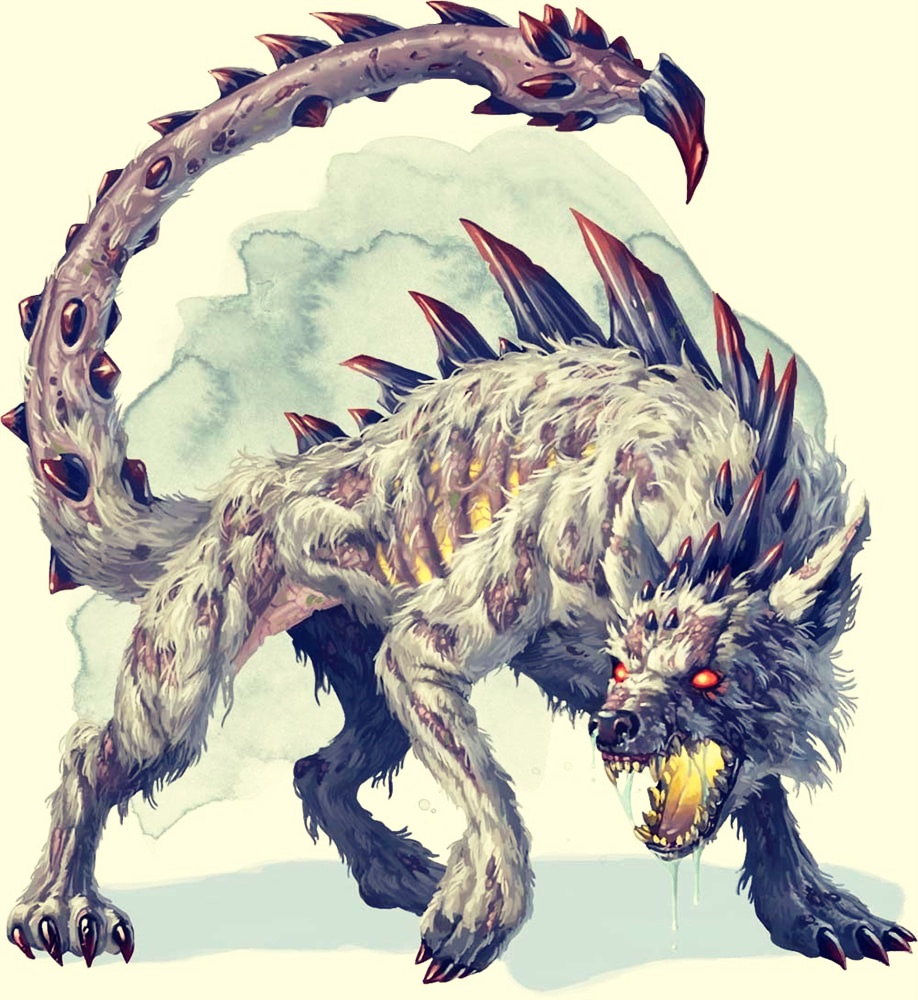
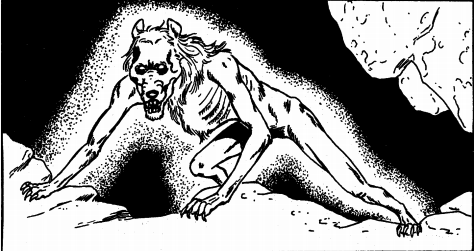
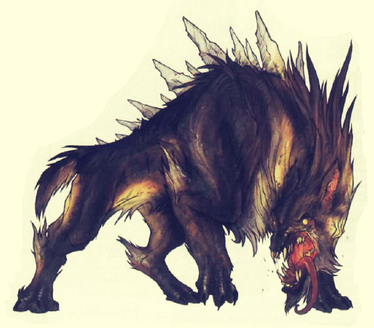
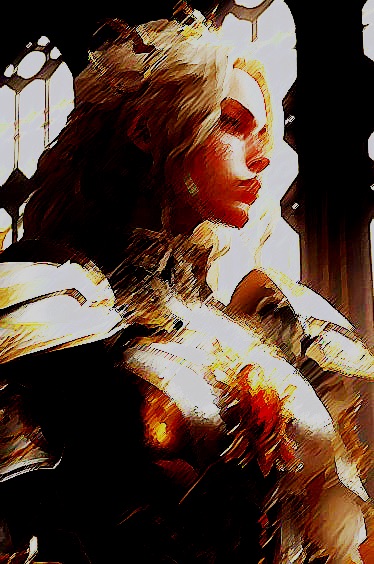

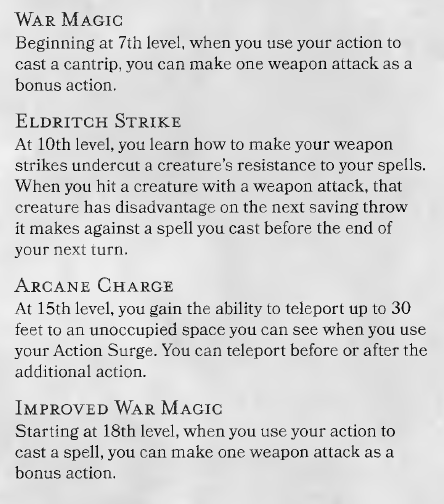

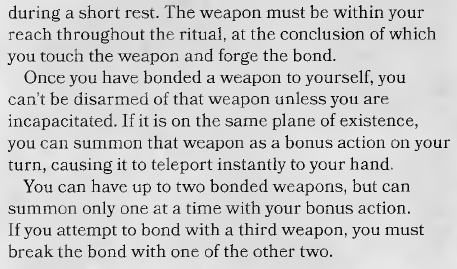
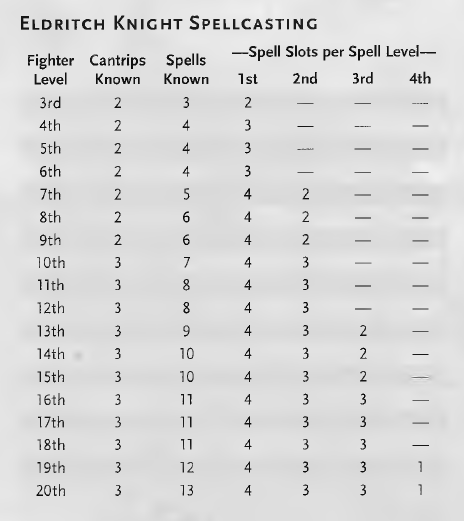
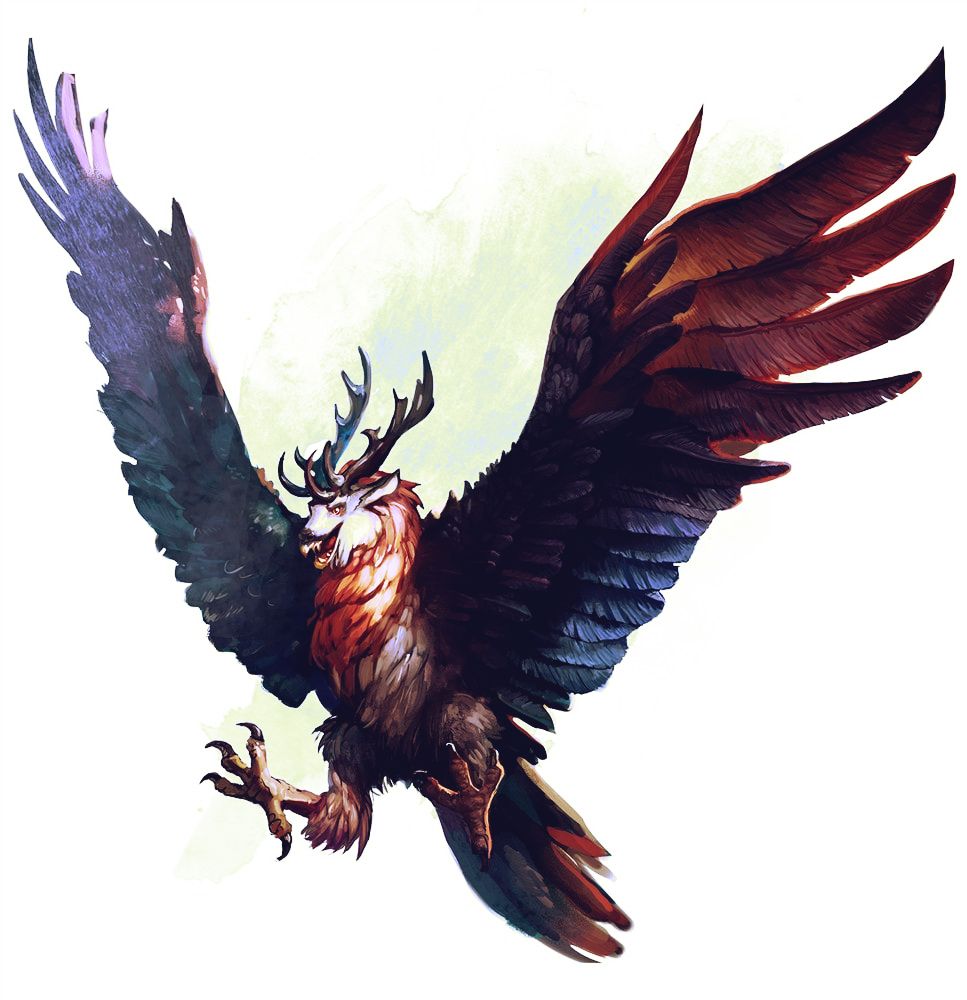
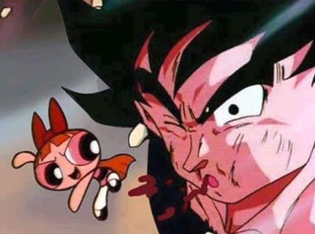
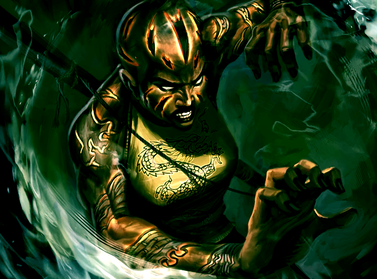
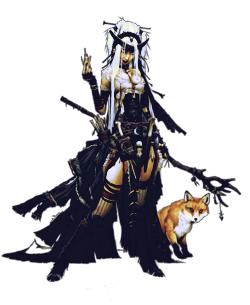
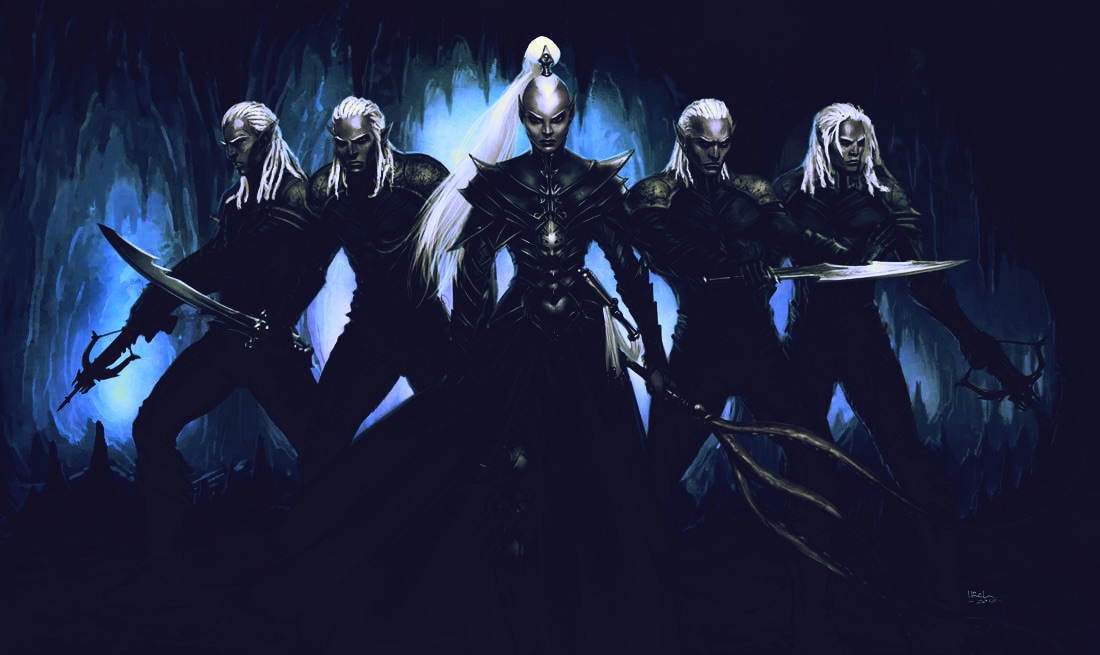

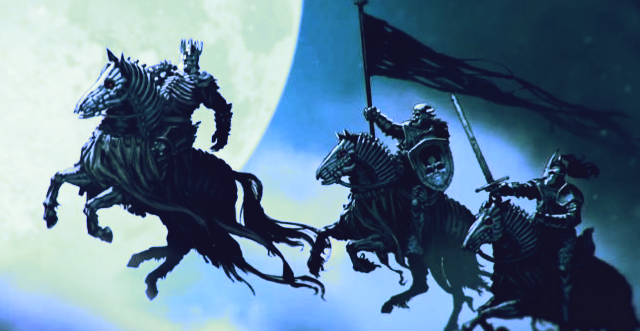
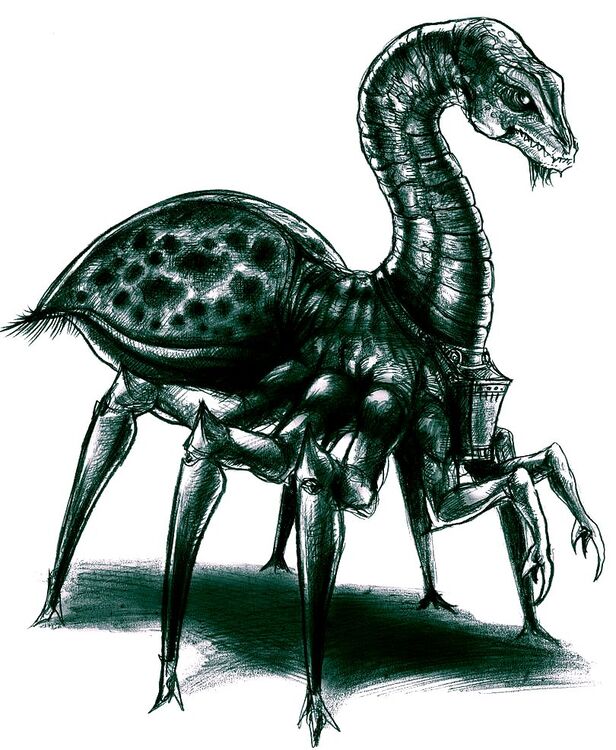
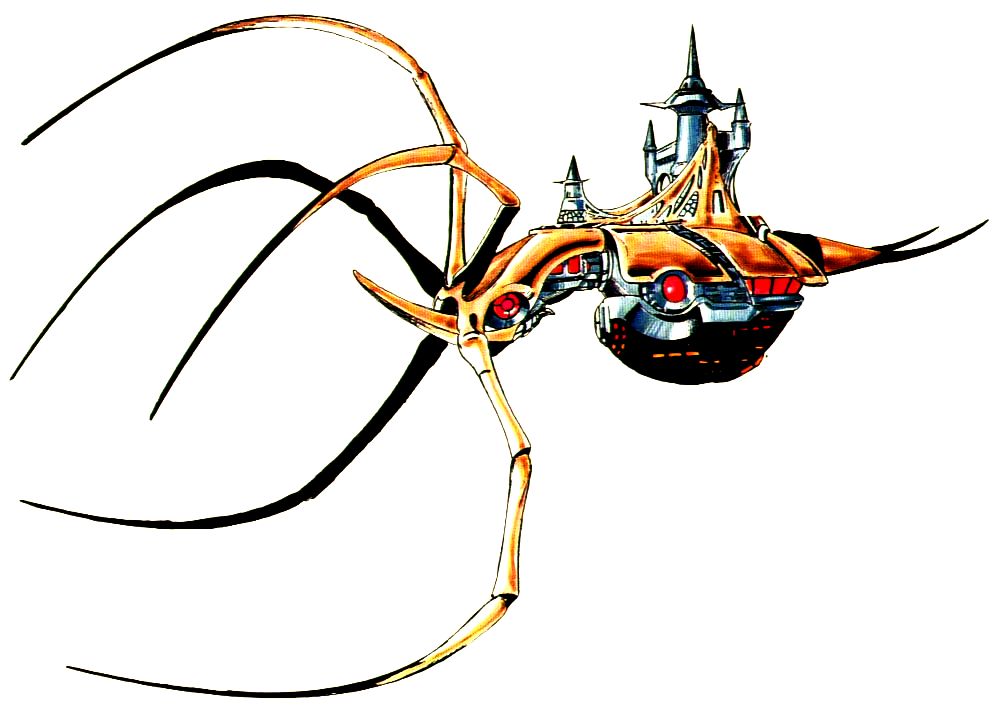
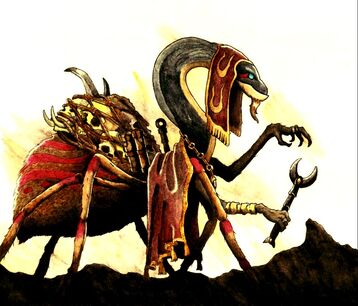
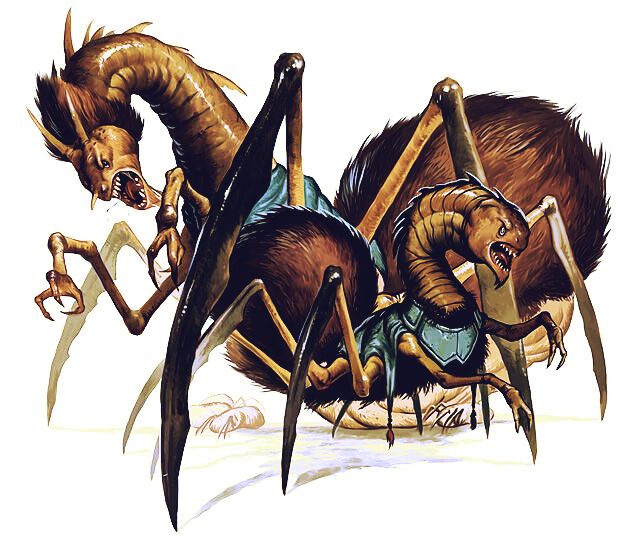
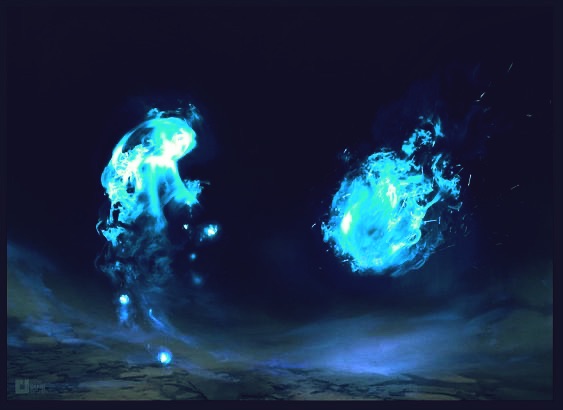
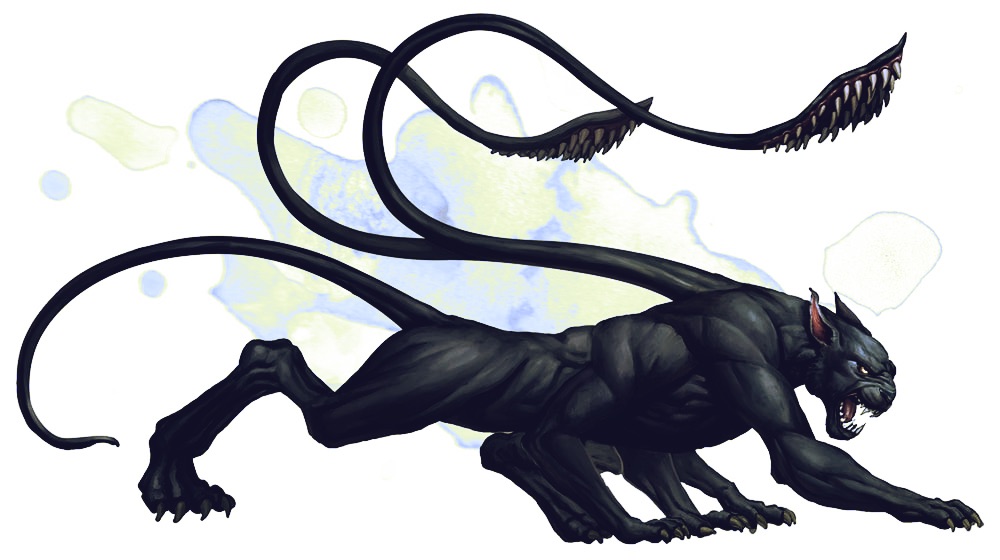
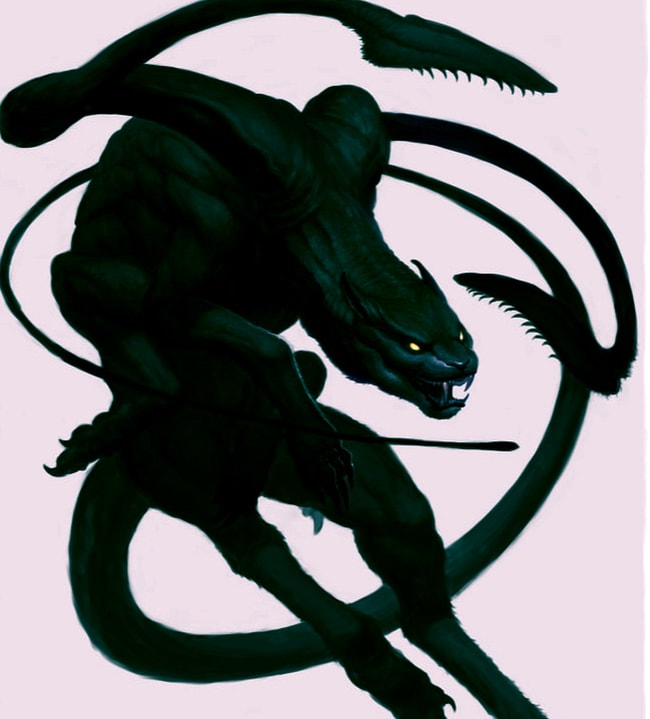
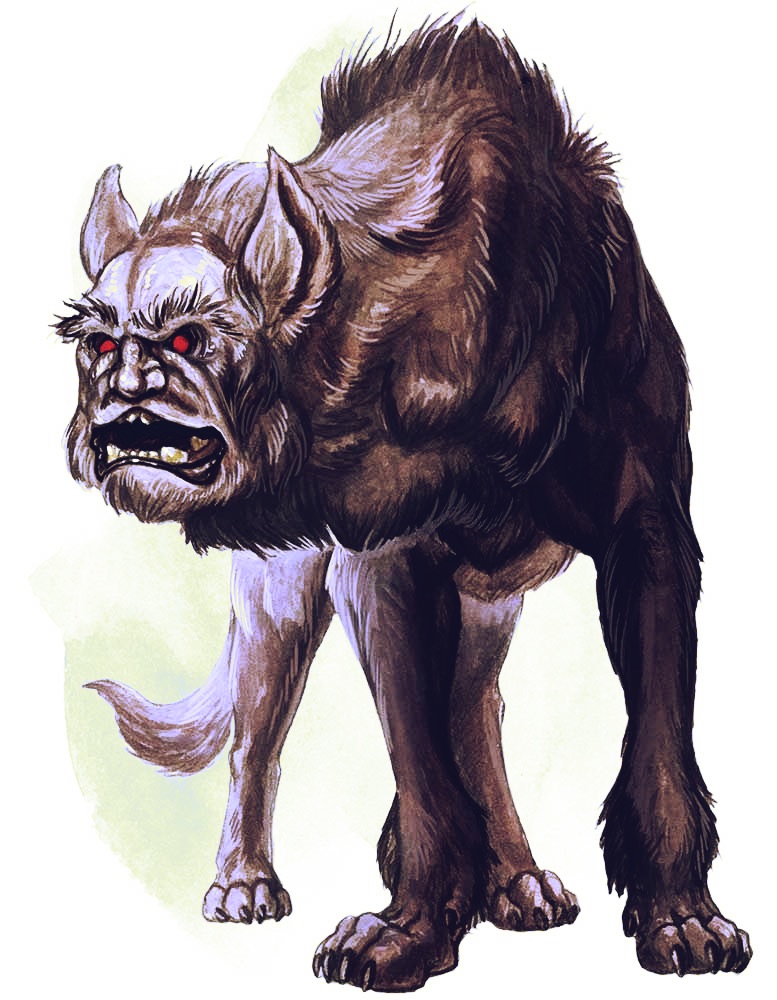
 RSS Feed
RSS Feed